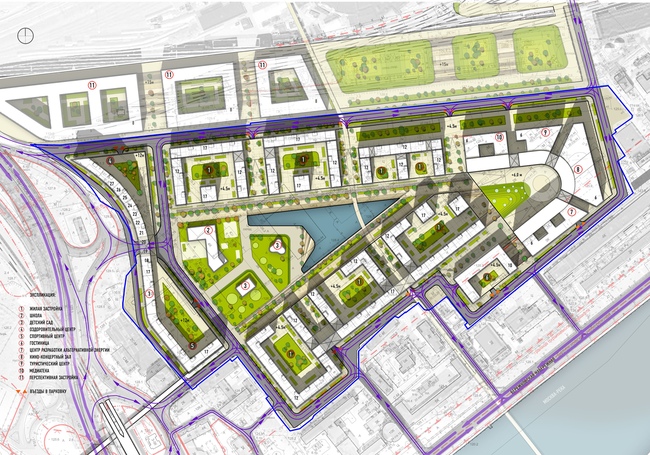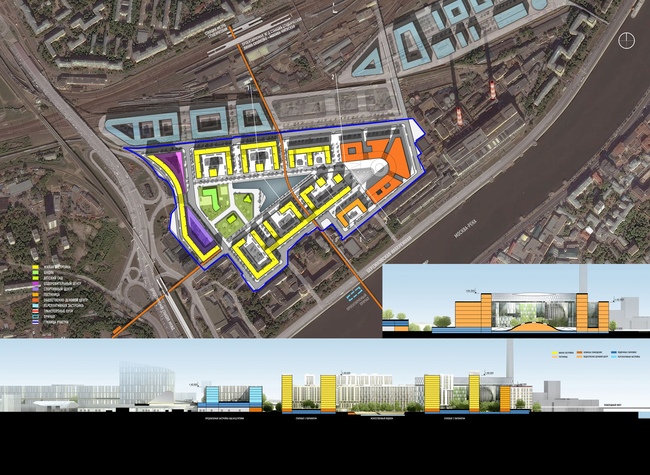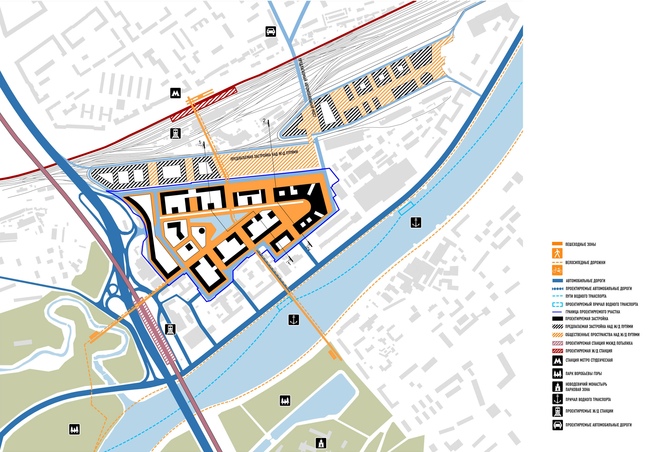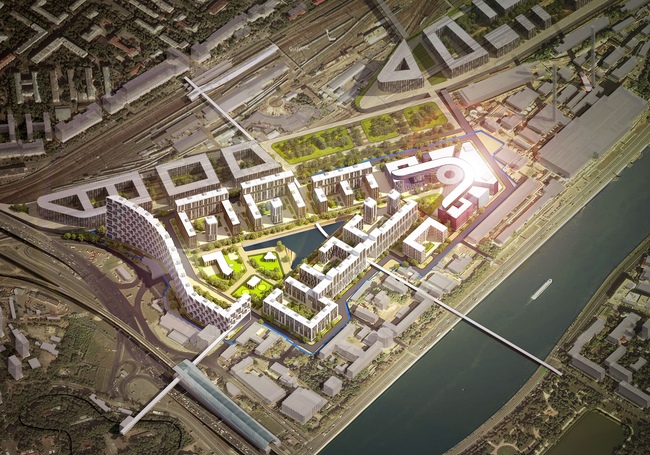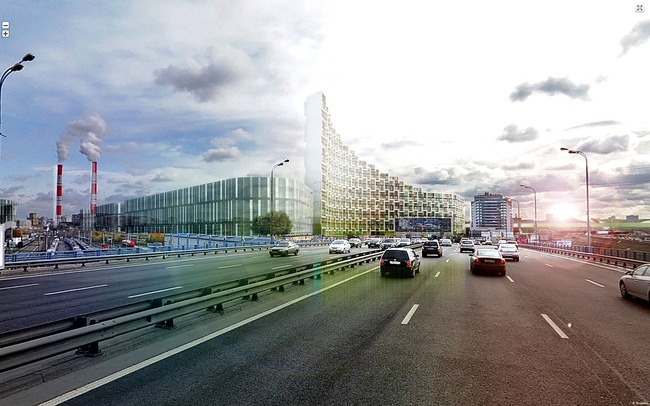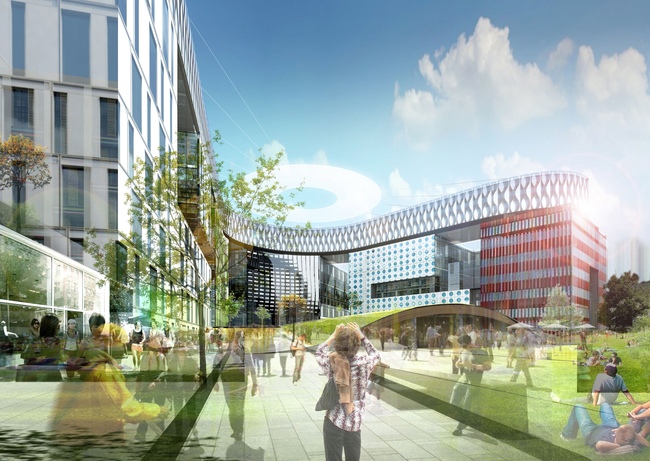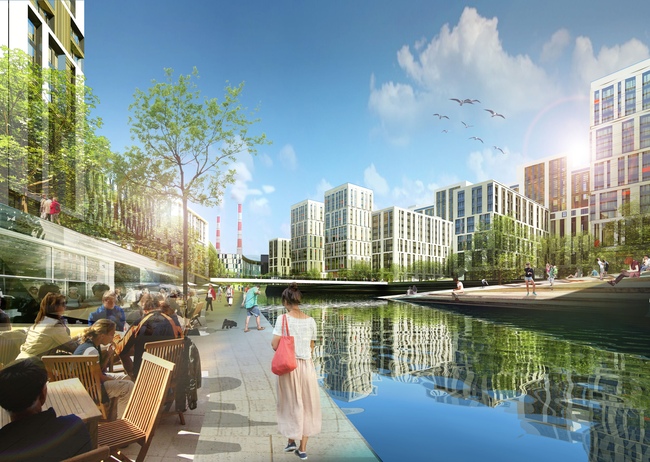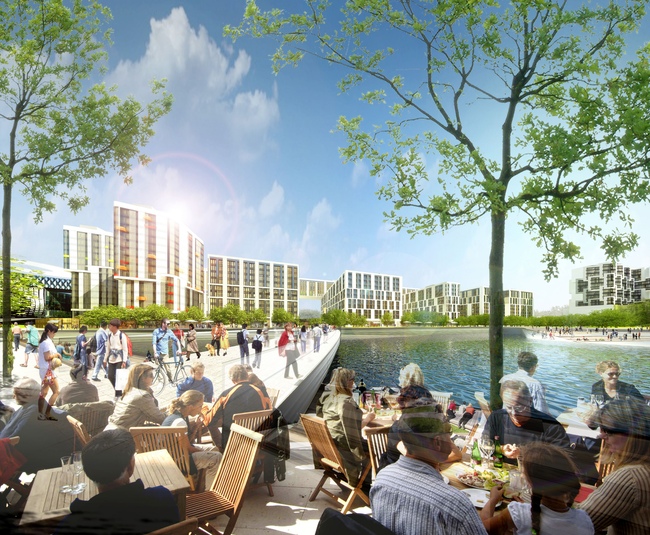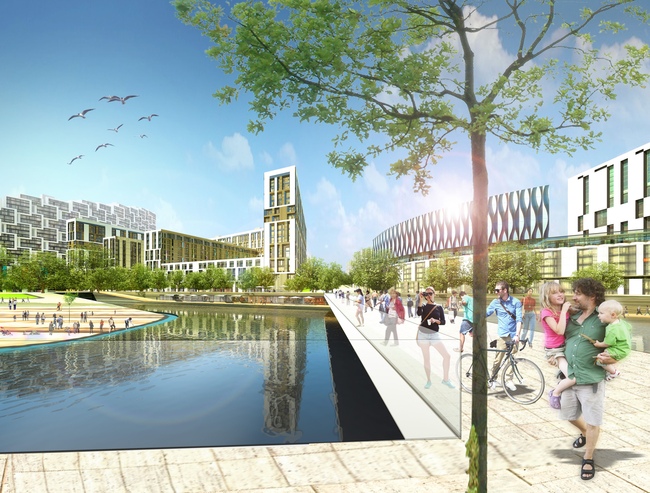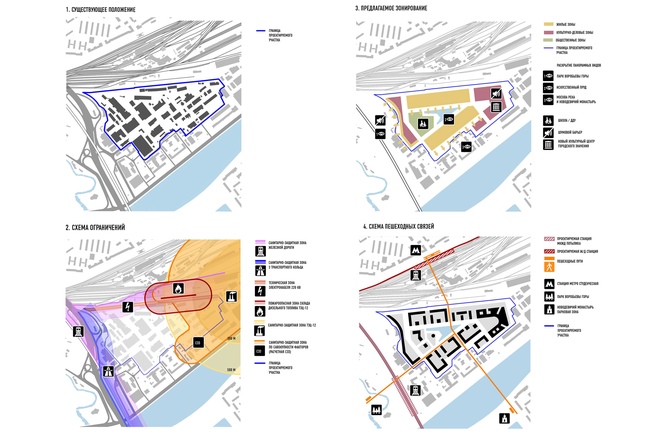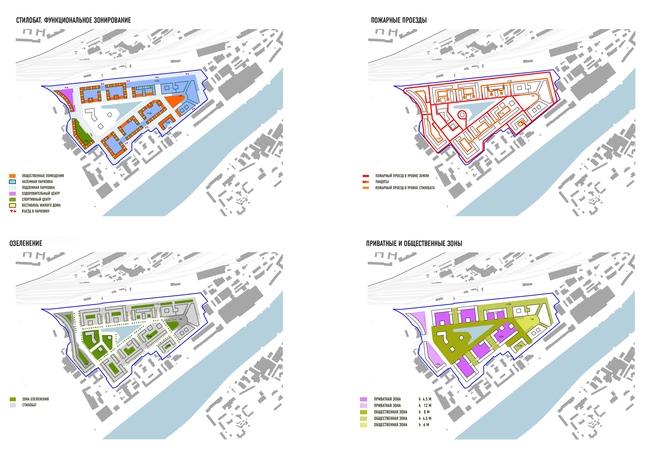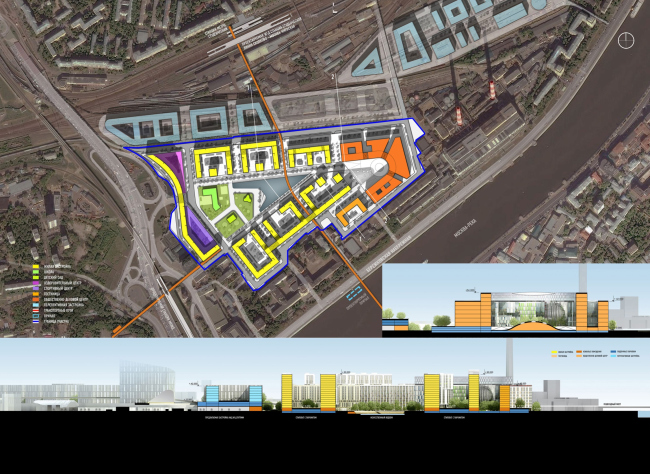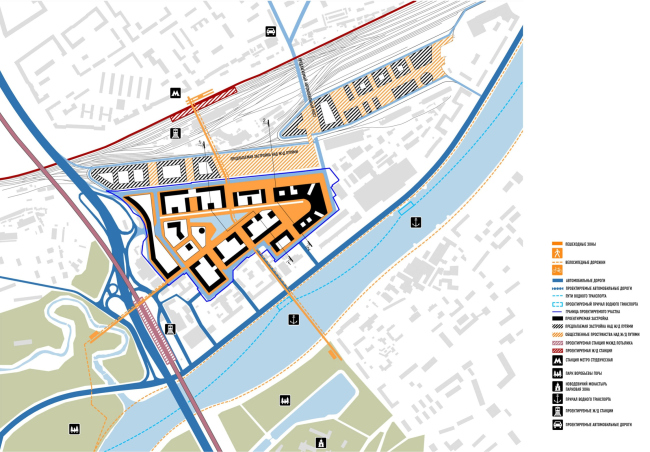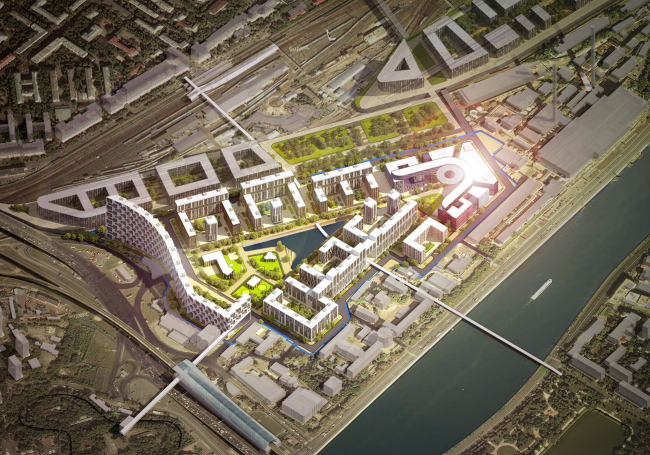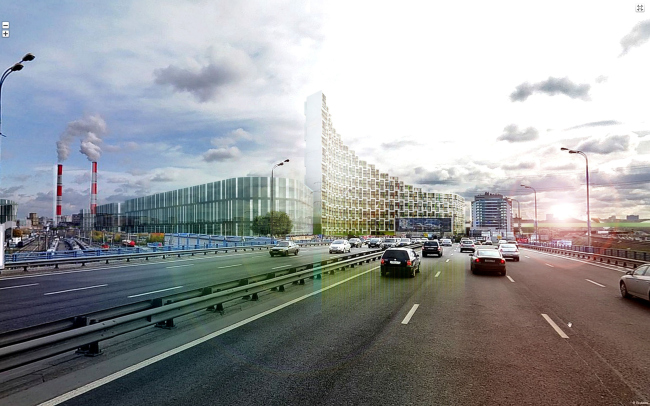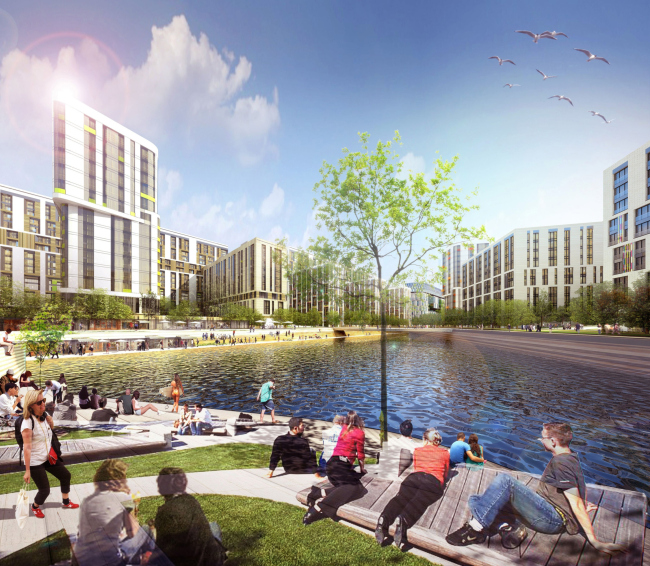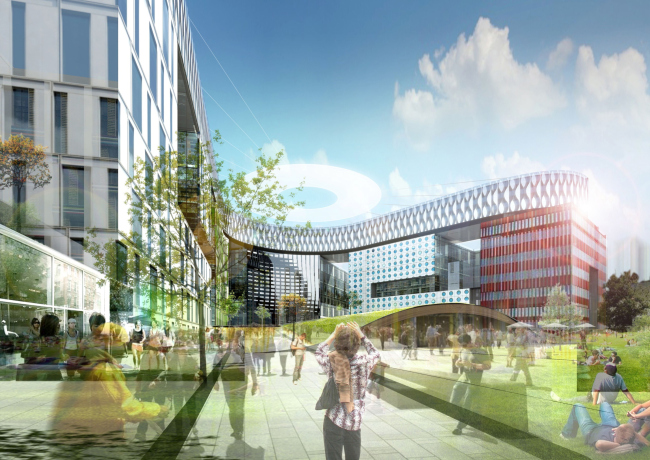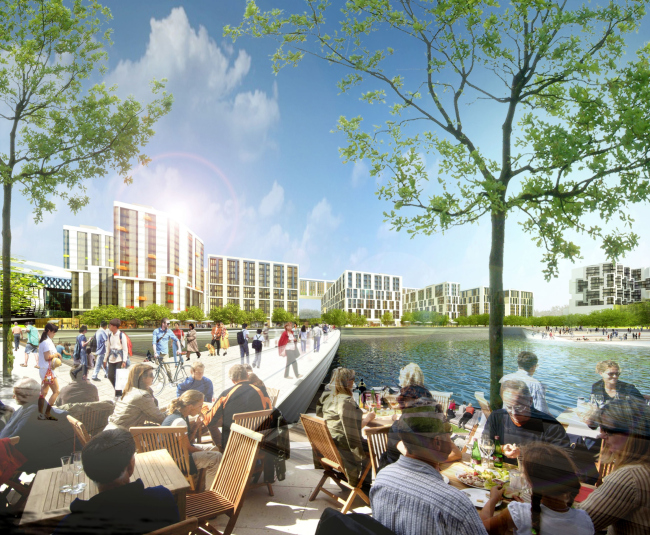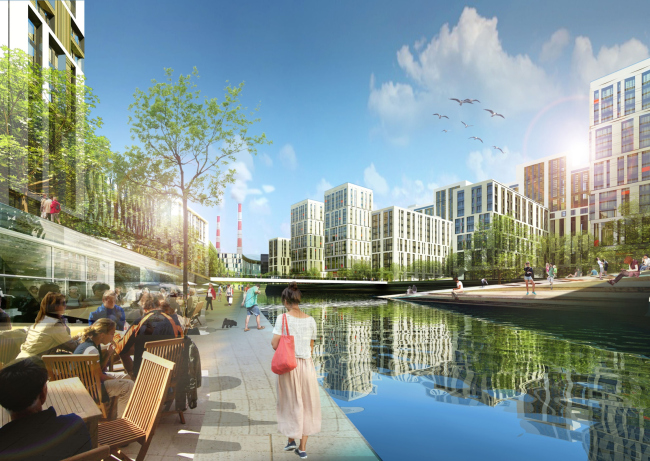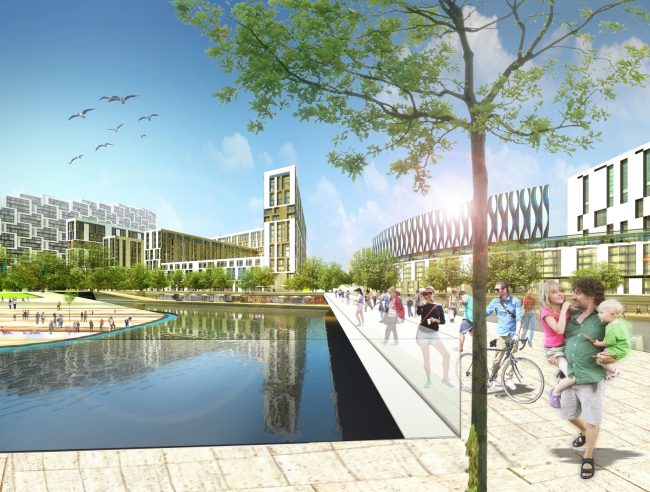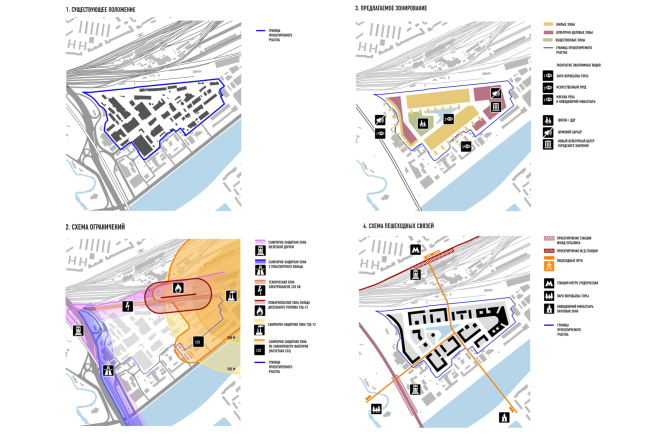|
Published on Archi.ru (https://archi.ru) |
|
| 29.04.2013 | |
|
The Outposts of City Comfort |
|
|
Anna Martovitskaya |
|
| Architect: | |
| Andrey Asadov | |
| Alexander Asadov | |
| Studio: | |
| ASADOV architects | |
|
Taking part in the competition for the development concept of the former industrial park at the Berezhkovskaya Embankment, "Asadov Architectural Bureau" came up with the solution that was turning this area into an integral part of the city. The contest for the 26-hectare industrial park in the capital's district
of Dorogomilovo, was already covered by Archi.ru. It stretches from the Kievsky
railway station to the Third Transport Ring, occupying the entire area between
the railway and the Berezhkovskaya Embankment. Today it is an
unpresentable-looking area with various buildings chaotically strewn upon it,
mostly storage and warehouses, but the owner of this land - LIRAL Company - is
intending to make a positive difference here. The integrated renovation of the
land site became the main theme of the contest, within the framework of which
"Asadov Architectural Bureau" developed a concept entitled
"Berezhki... A City for Living".
In order to turn the former industrial park into a residential cluster,
the architects had to address quite a few issues. The most important of them
was the factor of transport accessibility (or, rather, inaccessibility) and a
plague of restrictions issuing from its immediate neighbors. The railway sanitary
protection zones, the Third Transport Ring, the Steam Power Plant, and the
storage of diesel fuel were "eating away" almost half of the usable
space. However, surrendering the priceless land without a fight was, of course,
no option for the architects: it would have led to the project profitability
wearing down to nil, and the hypothetical residential area would have found
itself inside the alienation ring. The Asadov Bureau project, on the other
hand, was all about using the land to its full potential thanks to the gradual
strategy of turning the existing restrictions into the benefits for the future
residential environment.
First of all, the authors reconsidered the close vicinity of the area
with the railroad tracks. To be fair, one should say that here the Asadov team
did not invent anything groundbreaking - on the contrary, the architects
happily fell back on one of their favorite ideas that they had more than once
"used" on
Of course, this solution might seem a bit too long-term and a bit too
far-fetched, but the architects do have a point here: only such kind of a
"bridge" is capable of really making a difference in the isolated
situation of the industrial park that today is virtually cut off from the city.
Besides the gigantic (and, of course, extremely expensive) "casing"
that is meant to cover the railroad, the architects propose to build a few
bridges - one being the automobile bridge that will provide a direct link
between "Berezhki" and the Moscow City, and three pedestrian ones
that will, in turn, make the district accessible to the public practically from
every side: from the metro station, from the opposite bank of the Moskva River,
from the Mosfilmovskaya Street, and from the park of the Setun riverbed.
Being one of
The necessity to protect the residential area from the adjacent power
plant generated, in turn, a highly developed community center in the eastern
part of the site, meant to become a city-scale centerpiece. It got the shape of
a horseshoe that is turned in the direction of a new neighborhood and that
forms a comfortable inner space. In their contest project, the Asadovs propose
to cover it with a lightweight tent structure - the visualizations display an
elegant semi-transparent sphere suspended at the roof level by thin steel-wire
ropes. The association with Berlin's Sony Center immediately comes to mind,
although, the authors do admit that that building was indeed one of the
prototypes - in the contest of pre-concepts for the development of the site,
when architectural proposals are not yet considered, this is quite appropriate.
The community center will include an exhibition center, a concert hall, a
hybrid library, as well as a center of alternative energy forms where
innovative technologies of generating energy will be researched - the
successors of traditional power plants.
The landscaped and building-carrying platforms over the railroad, the
"wall" building and the buffer of the community center are the
"outposts" that the architects use to make the existing sanitary
zones if not step back, at least loosen their "grip" a bit.
"Putting them from all the "adverse" sides, we came up with a
space that is unique in the comfort that it provides and where we placed the
main residential and public areas" - Andrew Asadov explains. And, while in
the case of the analogue of the
NoneNoneNoneNoneNoneNoneNoneNoneNoneNoneNoneNone |
|
